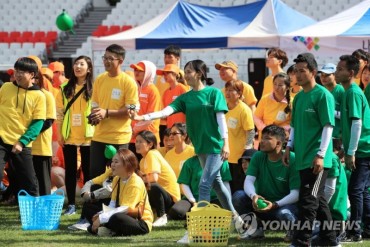
Many find themselves driving taxis or working as apartment security guards after reaching their 50s. (Image courtesy of Yonhap)
SEOUL, Jun. 15 (Korea Bizwire) – In their youth, scores of middle managers thrived in demanding roles that required expertise in data analysis, organizational oversight and other specialized skills.
But many find themselves driving taxis or working as apartment security guards after reaching their 50s, according to a new government study.
The study, released on June 13 by the Korea Development Institute, a state-run think tank, highlights the underutilization of middle-aged and older workers in South Korea even as the nation’s pool of young labor dwindles.
It points to a structural mismatch in the labor market, where capable older workers struggle to find jobs that match their skills.
The report, titled “The Current State and Improvement Measures of the Middle-Aged Labor Market Through Job Analysis,” found that while the core working-age population aged 25 to 54 peaked in 2009 and has since declined, the number of those 55 and older has risen rapidly.
The demographic shift means older workers make up an increasing share of the labor force.
However, their economic participation has not kept pace with adequate employment opportunities, the study showed.
The researcher, Kim Ji-yeon, classified jobs into five categories — analytical, social, service, repetitive and physical — and analyzed data from 1998 to 2021 in the Korean Labor and Income Panel Study to examine the correlation between age and job characteristics.
Among working men aged 20 to 75, the study found that as they grew older, the analytical, social and service aspects of their jobs tended to diminish while the repetitive and physical aspects increased.
Jobs with higher analytical and social components, like research and management positions, are typically more skilled and higher-paying.
These job attributes peaked in the 30s and showed a sharp decline after 50.
The study suggested that once men over 50 experienced career disruptions like being laid off or retiring, they were more likely to take jobs with lower analytical and social demands but greater repetitive and physical components compared to their previous roles.
For women, the decline in job quality occurred even earlier, with analytical roles hitting their highest levels in the 20s, likely due to career breaks from childbirth and child-rearing.
The KDI argued the phenomenon could not be easily attributed to an age-related drop in productivity.
In the United States, where job tenure and age tend to increase together, the portion of workers over 50 in analytical roles showed little decline.
“There may be structural factors in Korea that prevent middle-aged and older workers from being hired into analytical and social jobs despite their abilities, leading to occupational disruptions,” Kim said.
The lack of opportunity and unstable employment for older workers stems from low demand for their labor, the study contended.
To address this, it recommended phasing out the seniority-based wage system that incentivizes early retirement and diminished job quality upon re-employment.
Implementing pay schemes based on job content and performance could help maintain occupational continuity, allowing older workers to be utilized more efficiently.
Given the prevalence of early retirement, the study suggested re-employment systems after retirement age would be more effective than simply raising the retirement age.
It also called for policies supporting work-life balance and family-friendly workplaces to enable more women to remain in productive, higher-skilled roles.
M. H. Lee (mhlee@koreabizwire.com)






